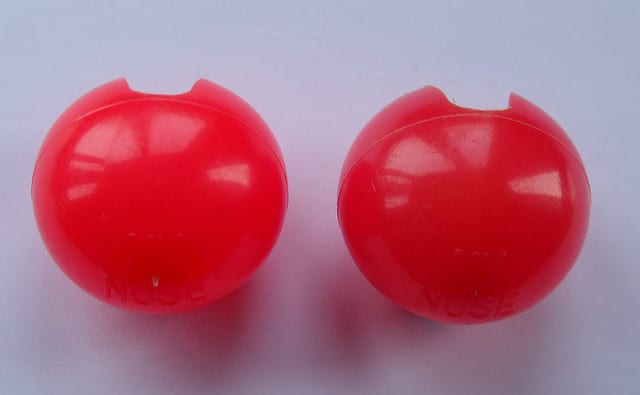
It doesn’t seem like there’s much room for laughter at the state of the world these days. And it probably didn’t back in the 1300s either, when Europe was being ravished by the black plague.
But “Red Noses,” a 1985 play by Peter Barnes, seeks to complicate that assumption. In the play, a monk decides laughter is the best medicine, literally. As he travels through the horrors and devastation of the diseased countryside, he and a band of misfits use clowning and humor on a supposedly divine mission to fight against the plague.
This is a text mired in tragedy but permeated with comedy, and artist in residence Randy Reyes was inspired to bring its timely message to Kelsey Theater after seeing a couple productions of the play, including at the New York University graduate program and the Twin Cities-based company Ten Thousand Things.
“It was something I always wanted to do, but it’s very challenging…. It really is a huge challenge for actors, especially young actors, to be able to have the depth of the writing in the text as well as to be funny and have the clown spirit in this very dark world,” Reyes said.
Fourteen actors will take on that challenge this January. Roles haven’t been assigned yet, as Reyes is cutting down the script and hopes to simplify many elements of the play, including set and costume design.
“I want to really simplify the script, and once I’ve done that I’ll start to assign roles. But I know a lot of the actors from teaching class and directing ‘Fuddy Meers,’ so I have a good idea of what I want. I’ll be doing a lot of cross-gender casting. I want that to be relatively fluid.”
Unlike most St. Olaf interim productions, Reyes hopes to launch the entire production in just four weeks, performing the final product in the last few days of January rather than after interim break.
“I wanted it to be condensed. I wanted the whole experience to have a flow to it,” he said. “It’ll be an all-immersive experience for the cast, and I just didn’t want to break that up.”
For lighting designer Rachel “Soxx” Lynch ’19, that means her schedule will be condensed to two weeks, instead of the three she had last year’s interim production.
“It’s more important to get things done faster, but we want to make sure things are still done accurately,” Lynch said.
She adds that interim productions are different than semester-long ones, as everyone involved in the process is much more hands-on and engaged with every aspect of the production.
“It’s much more like a company idea, so instead of having a work crew and then a production crew you have this entire theater company that works together in order to build a show,” Lynch said.
An interim production schedule is often intense, with classes running from 10 a.m. to 6 or 7 p.m. with possibly a night call after that.
“I’m excited, I’ve never done the J-term here, so I’m excited to be totally entrenched in that,” Reyes said.
Preparations for the play will include studying the text, researching the black plague and clown work. Reyes plans for the production to be actor-led and actor-focused, who will also be writing and performing original music with the text from the play.
“They’re going to be creating a lot, it’s going to be very collaborative in that way,” he said.
Lynch thinks that the play has the potential to show that “even through the darkest times, we can find something to hold on to.”
Reyes agrees. He hopes “Red Noses” can shed “a little bit of light in a relatively dark time.”
“I think the world is in a very scary place, where it feels like there’s a lot of different modern-day equivalents of what plagues are going on in the world,” Reyes said. “I hope in this play audiences can just gleam a little bit of light and hope through that. Humanity has gone through a lot worse and made it through and we can do it too.”

